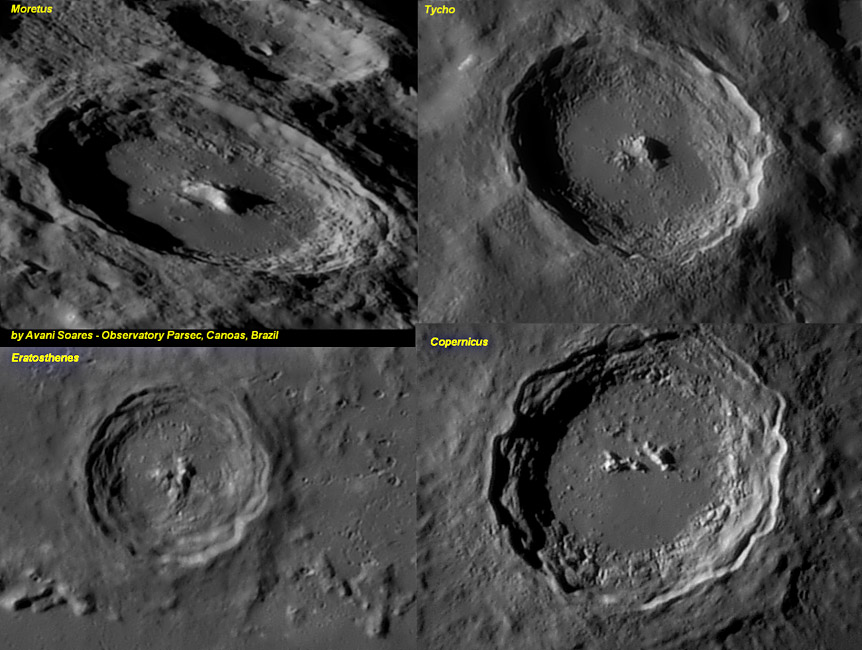October 6, 2014
Peaked

image by Avani Soares, Brasil
Central peaks were once argued to be evidence that lunar craters were volcanoes. This is because many terrestrial volcanoes had multi-phase eruptions, often building a smaller cone on the floor of a previously collapsed cone. This was a forgivable error, for scientists had never conceived of such high energy impacts that ground zero would be forced down, and then rebound up almost like a fluid drop. But even without this knowledge, early lunar scientists should have noticed that peaks inside volcanoes had no systematic similarities - their heights and locations inside craters seemed almost random. But lunar crater peaks are normally near the middle of the crater, hence they are called central peaks. And I discovered in 1973 that the heights of central peaks in fresh lunar craters were proportional to their crater diameters. This killed the volcanic hypothesis and helped confirm the impact origin of peaks and craters. That relation between peak height and crater diameter was based on peak shadow length measurements I made on Lunar Orbiter IV photographs. Forty years later LRO altimetry data were used to update and extend the study. But there are still many questions about peaks to be resolved, including why at least one peak looks like an ostrich egg.
Chuck Wood
Technical Details
October 03-2014. C14 Edge + Qhy 5L + 2X Powermate + IR Pass Filter. All photos were made using the exact same setup and configuration so the relative sizes are proportional.
Yesterday's LPOD: A Can of Worms?
Tomorrow's LPOD: Who is the Woman in the Moon?
COMMENTS?
Register, Log in, and join in the comments.



